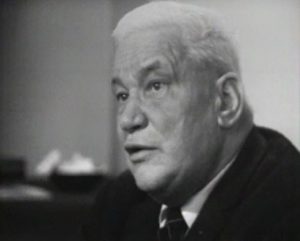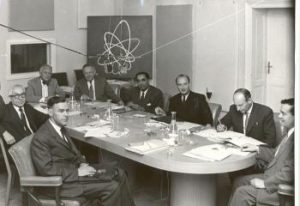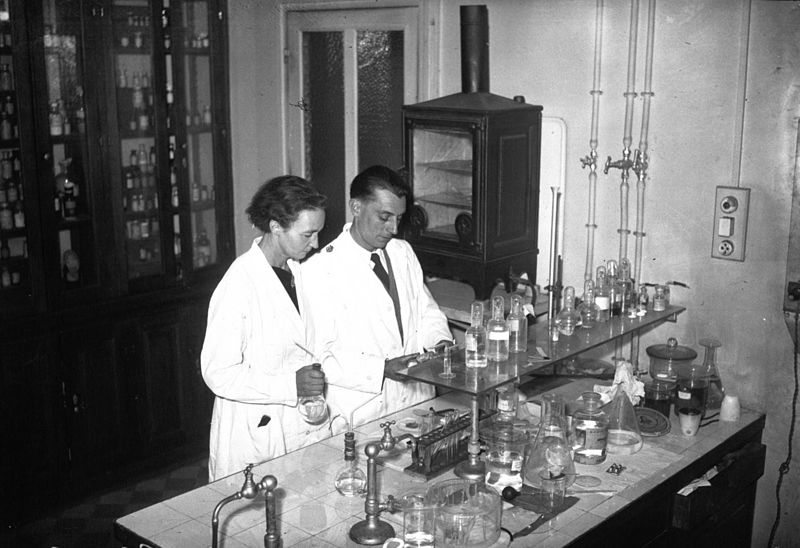French scientists have played a seminal role in nuclear research since the late nineteenth century. Marie Curie and her husband Pierre were pioneers in researching radioactivity. Their daughter, Irène, and her husband Frédéric Joliot-Curie discovered artificial radioactivity, and Frédéric led a team that studied nuclear physics and chemistry in the late 1930s.
During the German occupation of France during World War II, Joliot-Curie’s research was halted. He remained in France and fought with the French Resistance for the duration of the war.

After the war began in 1939, the French program mainly focused on fueling energy to support the French war effort. The French were forced to hide their supplies of heavy water and uranium. As a result, many French scientists began to work on British-Canadian nuclear projects.
Five prominent French scientists contributed to the Manhattan Project. They also conducted nuclear research in England and Canada during World War II. They were Lew Kowarski, Hans von Halban, Bertrand Goldschmidt, Pierre Victor Auger, and Jules Guéron.
These scientists worked together at the Montreal Laboratory, which was established by the National Research Council of Canada (NRCC) in late 1942. The goal of the Lab was to continue secret nuclear research for the Tube Alloys project that was being conducted at Cavendish Laboratory (right) in Cambridge, England, as well as other sites.
Lew Kowarski
Lew Kowarski (right) was a French physicist. In the 1930s, he worked on the team that discovered that neutrons were emitted in the fission of uranium-235. This discovery would later help with the design of the atomic bomb.
 In 1937, he went to Paris to work with Joliot-Curie’s research team and co-authored a series of landmark papers describing for the first time various aspects of the chain reaction. Just before the German invasion of France, his research records were smuggled out of France.In 1940, he and Hans Halban secretly transported heavy water to England. He recalled: “We were led on the boat in the middle of the night. Staff officers, colonels and possibly the generals carried our suitcases, because at this moment of despair, they had the dim impression that we were carrying some kind of hope.” He continued to conduct atomic research at the Cavendish Lab in Cambridge for the MAUD Committee.In 1942, Kowarski continued his research at the Montreal Laboratory. Three years later, his work led to the creation of the first nuclear reactor in Canada. He then went on to supervise the first French nuclear reactors.
In 1937, he went to Paris to work with Joliot-Curie’s research team and co-authored a series of landmark papers describing for the first time various aspects of the chain reaction. Just before the German invasion of France, his research records were smuggled out of France.In 1940, he and Hans Halban secretly transported heavy water to England. He recalled: “We were led on the boat in the middle of the night. Staff officers, colonels and possibly the generals carried our suitcases, because at this moment of despair, they had the dim impression that we were carrying some kind of hope.” He continued to conduct atomic research at the Cavendish Lab in Cambridge for the MAUD Committee.In 1942, Kowarski continued his research at the Montreal Laboratory. Three years later, his work led to the creation of the first nuclear reactor in Canada. He then went on to supervise the first French nuclear reactors.
Hans Halban

Hans von Halban (left) was a French physicist. After finishing his PhD at the University of Zurich, Switzerland, Halban went to Copenhagen to conduct research with nuclear physicist Niels Bohr. Then, in 1937 he went to Paris to work with Joliot-Curie’s research team and co-authored a series of landmark papers describing for the first time various aspects of the chain reaction. In 1940, he and Kowarski secretly transported heavy water to England.
In England, he continued his research at Cambridge, continuing their pioneering work on nuclear fission. In 1942, he was assigned to direct the Montreal Laboratory. His work contributed to the joint Canadian, British, and French atomic pile at the Chalk River Laboratories. After the war he first moved to Oxford University, UK, before returning to France in 1955, where he helped direct the construction of the French Atomic Energy Commission (Commissariat à l’énergie atomique; CEA) Saclay Lab in 1954.
Bertrand Goldschmidt
Bertrand Goldschmidt was a French chemist. In 1939, he earned his Ph.D. from the Radium Institute, and worked there as a professor until 1940. He was dismissed when the Vichy government passed anti-Semitic legislation. Among other discriminatory practices, this legislation prevented Jews from working in academic positions. He then left France and joined the Free French Forces.
In 1942, Goldschmidt began to work at the Met Lab in Chicago. He was the only Frenchman to work on the Manhattan Project in the United States. At Chicago, he worked as a chemistry consultant, and helped develop the PUREX nuclear reprocessing technique, which continues to be used today. That same year he became the Director of the Chemistry Division at the Chalk River Labs.
 Goldschmidt greatly influenced French policy on atomic energy and weapons since the end of the war. In 1946, he returned to France and began a long career with the CEA.
Goldschmidt greatly influenced French policy on atomic energy and weapons since the end of the war. In 1946, he returned to France and began a long career with the CEA.Pierre Victor Auger
Pierre Victor Auger was a French physicist whose work focused on atomic, cosmic ray, and nuclear physics. After the outbreak of World War II, Auger joined the Free French Forces. In 1941, he went to Montreal to work with the Tube Alloys team. He also warned General Charles de Gaulle about the Manhattan Project, indicating that Americans were rapidly working to develop an atomic bomb. After working in Montreal, he moved to London to continue research.
In 1945, the University of Paris appointed him to be the director of higher education in the science department.
Jules Guéron
Jules Guéron was a French chemist who helped develop atomic energy in France. In 1940, he fled to Great Britain to enlist in the Free French Forces. In 1941, he also joined the Tube Alloys team at the Cavendish Laboratory in Cambridge. In 1943, he began to work at the Montreal Laboratory. After the war, Guéron continued to work as a scientist. In 1945, he became the Head of the Chemistry Unit of the CEA.
After the allies liberated France in 1944, Kowarski, Halban, Guéron, and Goldschmidt gradually returned to France to help resume atomic research there. In 1960, France became the fourth country to possess nuclear weapons, after the United States, the Soviet Union, and Great Britain.
For more on the French nuclear program, click here.
Further Reading:
Canada’s Role in the Manhattan Project
Tech Nuclear Profile of Halban
AHF Profile of Bertrand Goldschmidt
Wilson Center Biography of Goldschmidt
Wilson Center Interview with Goldschmidt





